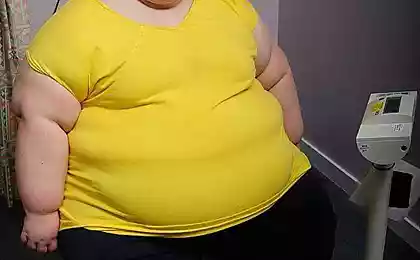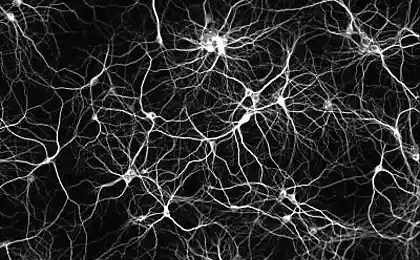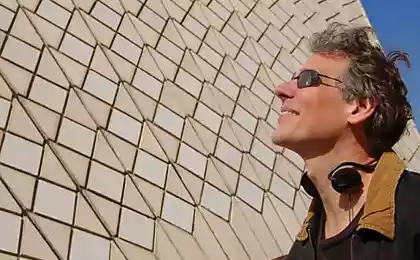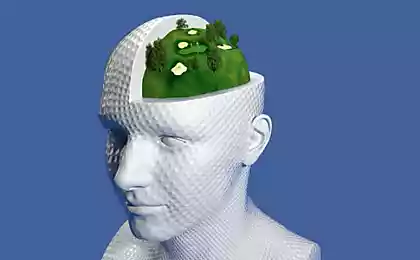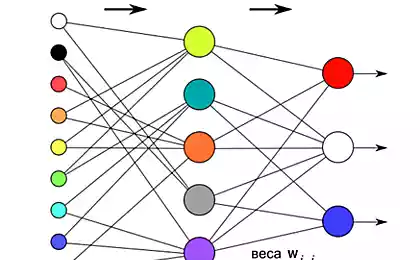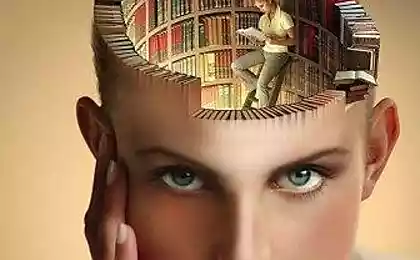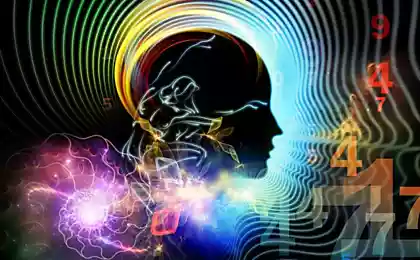685
The concept of self-realization: Professor Ramachandran about the extra limbs and phantom pain
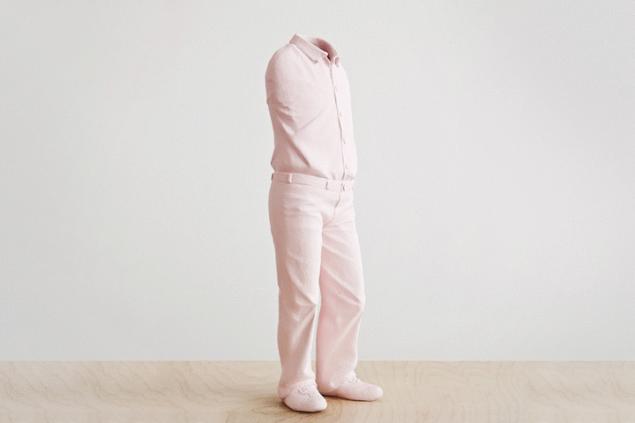
© Erwin Wurm
Professor Vilayanur S. Ramachandran, head of the Center for the study of brain and cognitive activities of University of California, the most famous in the world of science with his experiments in the field of behavioral neurophysiology. In 2012, the scientist has read in the University of Glasgow lecture from the famous series of Gifford Lectures on the theme "Illusions and the brain." He tells how jelly-like body (a weight of 1.5 and the consistency reminiscent of tofu) is able to study and realize interstellar space, the concepts of love, passion and compassion, and most importantly — to be introspective, to understand yourself and your own existence.
Phantom pain isthe Main attributes of human consciousness — the sense of unity of mind and body (sense of themselves as a single, indivisible identity), a sense of temporal continuity of his existence (the ability to see the past and predict the future from the point of view of his present position), sense of control over their own destiny (free will) and self-awareness (awareness of the world through the senses and the mind and awareness of self-awareness). How does the mechanism of identification of the mind with the body which it inhabits? In other words, how our brain creates a schema of the body, giving us a sense of the physical boundaries of the self?
Search for correlations between physiological changes in the brain and changes in the perception of man's own body is one of the main objectives of cognitive neuroscience. In order to show a few examples, Professor Ramachandran speaks to the theme of phantom limbs, the first mention of which date back to antiquity. Phantom limb and associated pain, phantom feeling, about 98% of amputees. The nature of this phenomenon lies in the activity of one of the vertical strips of the brain, where the so-called somatosensory map (map of Penfield). This area of the brain responsible for sensory responses in different parts of the body. Experienced by Professor Ramachandran was convinced that the parts of this card that is responsible for amputirovannyy parts of the body can still react to stimuli. So, a person with an amputated left arm below the elbow, there feeling the touch of a phantom hand with a corresponding stimulation of the left side of his face near the cheeks and nasolabial triangle. This means that areas of the brain responsible for lost body parts, do not lose touch of the force, not "off", and just carry somatosensory function to another area of the body in accordance with the map of Penfield (left hand on the map located just next to the left part of the face).
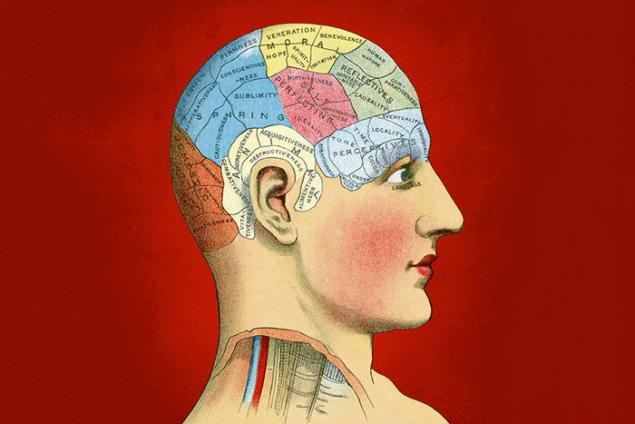
Touching the area of the body, which carry somatosensory functions of the amputated organ, causes bright and accurate phantom sensations of this body part. Moreover, the transfer of these functions is extremely thin: in one experiment, Professor Ramachandran asked the patient to raise amputirovannyy hand up and let a drop of water on his cheek, which caused the patient a vivid sense of movement drop in phantom of a brush up, contrary to the laws of physics.
Sensations such patients can not be called delusional, it's not a mental disorder, and complete the illusion of movement and the presence of an amputated limb on a sensory level. According to Professor Ramachandran, the mechanism of occurrence of these illusions is closely connected with the ordinary work of the brain before the amputation. In a healthy person this happens: the brain sends a signal to the limb, the muscles moving the limbs send feedback to the brain, and a copy of the original signal is sent to the center of the formation of the body schema to track these movements. The amputee is no feedback and visual confirmation of motion, but send the original signal to reduce the muscles of their brain is still capable of. Approximately two out of three patients with an amputated brush talking about the sensations of touch, heat and cold, as well as more complex sensations of shaking hands, answering phone call. However, in a third of cases, the phantom limb patients is a source of constant unbearable pain, many complain of the sensation that their phantom limb is always in an uncomfortable position that the fingers of an amputated hand like a tightly clenched into a fist and dig their nails into the palm, causing a genuine sensation of pain. In most of these cases the limb of the patient before the amputation was quite a long time paralyzed, in connection with which the brain produces awareness of the paralysis due to non-receipt no muscle, no visual evidence of the movement of a limb when sending momentum to its movement, after the amputation carries over into the phantom.
To confirm the hypothesis about the importance of the lack of visual confirmation for the formation of awareness of paralysis Professor Ramachandran conducted an experiment with one of the amputees who lost their limbs about ten years ago and had phantom pain. By placing the healthy hand in the mirror cube in such a way that the patient has the feeling of eye contact with a complete limb is amputated, the scientist asked the subject to make symmetrical movements — like clapping your hands. Receiving a visual confirmation of the presence of the hands, the brain was aluminiowa phantom pain, replacing them with sense actions.

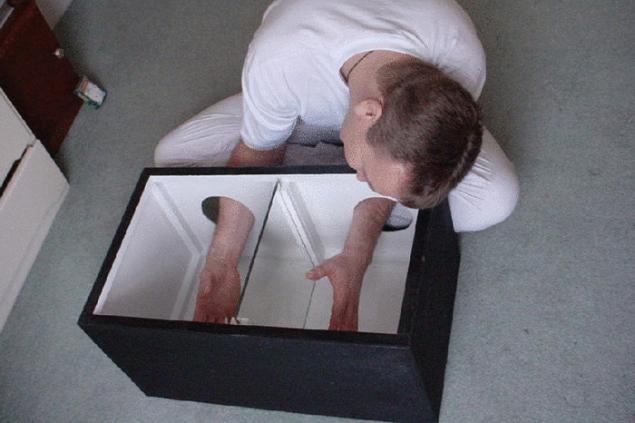
Mirror cube
Initially, this effect was lost upon loss of visual contact with the mirror, however, after three weeks of daily half-hour sessions, the patient completely and permanently got rid of any feeling of the phantom body part, modifying in this method, the private body diagram on a cerebral level. Professor Ramachandran jokingly called it "the first case of amputation phantom limb in the history of medicine". The method is now used worldwide as standard treatment for phantom pain in amputees, and some forms of paralysis without amputation, for example, post-stroke paralysis or reflex sympathetic dystrophy.
Mirror neuronsProfessor Ramachandran was the author of the very curious discoveries in the field of studying phantom limb sensations. It is connected with the activity of so-called mirror neurons, are largely responsible for the simulations.
Neuroscientist Giacomo Rizzolatti is considered one of the world's leading specialists on the problems of mirror neurons. In collaboration with the philosopher Corrado Sinigaglia he wrote a book which shows how strong and durable ties that bind us to others.
Mirror neurons in the brain create a virtual model of the seen action and projecting it on myself. So, if a person is pricked with a needle, a mirror neuron immediately generates a model of this feeling in the brain of the observer, being a direct instrument of empathy. However, the beholder, in contrast to the prick, will not feel pain as such, because of the impulse from the skin to his brain did not go. Amputee can fully experience phantom sensations at the sight of the injection, aimed at the part of the body pricked, which is the first amputated.
The reason is the lack of ability to send the same pulse with the surface of the skin, the brain in this case, modify the existing in this model this action in full measure, making the amputee the sensation of the injection to the phantom body parts. It turns out that the only factor that differentiates between touch-determination of two individuals and prevents the appearance of direct perception of empathy — it is only the skin, physical appearance. Professor Ramachandran calls these neurons "Gandhi neurons" or "neurons of hyperempathy". By the way, there are studies showing that the mirror neuron system have sociopaths depleted or rudimentary, it causes physiological ability to deliver pain to others.
Extra limbs
Another interesting phenomenon opposite to the phenomenon of phantom limb syndrome is the non-perception of the integrity of his own body, or apotemnophilia. Patients suffering from this syndrome feel an irresistible desire the amputation of any part of the body in strictly certain limits. They don't treat it as a medical problem, for them it is something desirable, a source of satisfaction. And the feeling is so strong that patients are on an intentional infliction of injury, unwanted limbs and illegal operations to carry out the amputation, and having it, really feel the satisfaction. In the vast majority of cases, patients manifest a strong desire to amputate his left arm below the elbow.
From conversations with these patients Professor Ramachandran learned that the reason for this strange behavior is not the feeling of being unwanted hand in the alien — on the contrary, patients say that it is too Intrusive, too Intrusive felt. Experimentally found out that even with ordinary touch to an unwanted part of the body, the patient with apotemnophilia is under stress, it increases perspiration, which does not occur when touching other parts of the body. According to the group of Professor Ramachandran, the body initiates a stress response due to the fact that limb for some reason is missing in the schema of the body, which is generated in the parietal lobe of the brain. The presence of body parts on the map of Penfield and the lack of it in the scheme of the body that creates the contradiction that the brain responds with stress, discomfort. Thus it appeared that the nature of this disorder, which until then was considered a purely psychiatric, lies in the field of neurophysiology.
During this lecture, the Professor also spoke about the rubber hand illusion. This experiment looks like this: the subject sits in front of the test so that instead of one of your own hands in front of him is a rubber hand, his real hand is hidden from him. The test produces the same touch at the same time to present the hidden and the visible artificial hand. The brain by analyzing the statistical correlation between visual and touch sensations of touch, after a few minutes, incorporates the rubber hand into the body schema, and begins to feel the touch to the rubber hand. Even more impressive is the fact that in the further development of the experiment, you can remove from the table the rubber hand and the subject will also be touched to the table and experience the somatic symptoms of stress with the threat of aggression in the side of the table. So quickly the brain is able to correct the seemingly well-established pattern of the body.
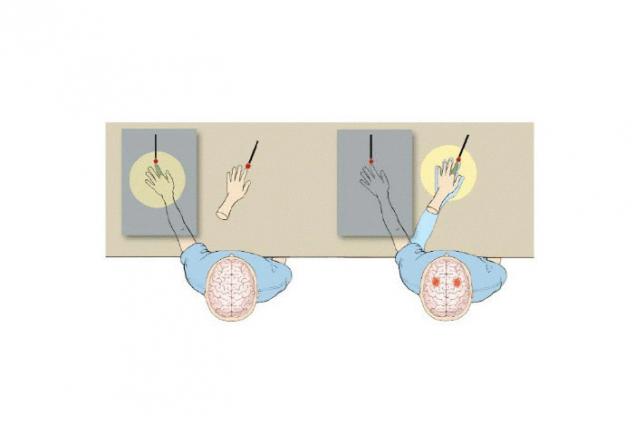
The rubber hand illusion
Open Professor Ramachandran had a strong influence on modern neuroscience, fundamentally altering some basic idea. For example, it used to be that originating in the brain the sensory signals are phased in all the calculation modules (color, shape, distance), these modules are Autonomous and operate in strict sequence. Now it has become clear that this process occurs partially at each stage of processing sensory information, and all modules are intertwined in a complex network. The modules are in a state of dynamic equilibrium with each other, with sensory information entering the brain, human body through the incoming pulses and with other brains through mirror neurons. A number of the Professor's experiments, including an experiment with a rubber hand, have striking philosophical implications. They show that the concept of "I", perception of self as a unified, indivisible body — a very delicate matter, and the brain can reorganize the diagram of the human body fairly quickly depending on the obtained internal and external stimuli. As emphasized by the Professor himself Ramachandran, "the current level of development of neuroscience allows us to put empirical experiments to obtain direct evidence or rebuttal millennial philosophical constructs, such in particular as the concept of self-realization". published
Source: theoryandpractice.ru



